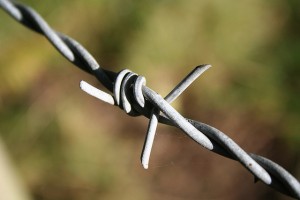What is a Knot?
Not Your Boy Scout’s Knot
 As a massage therapist, my job is to help work out those tight knots that you get. Through the proper amount of pressure and the right massage techniques, I can work to release the tension that those knots create. But, what exactly is a knot? I’m not talking about the knots that are taught in Boy Scouts or on the piers of the local yacht club. But the ones in your muscles, similar to the knots you will find in a piece of wood.
As a massage therapist, my job is to help work out those tight knots that you get. Through the proper amount of pressure and the right massage techniques, I can work to release the tension that those knots create. But, what exactly is a knot? I’m not talking about the knots that are taught in Boy Scouts or on the piers of the local yacht club. But the ones in your muscles, similar to the knots you will find in a piece of wood.
How Are Knots Formed?
The scientific term for a knot is a myofascial trigger point, with myo meaning muscle and fascial referring to the connective tissue surrounding the muscle.
A knot can form when an event generates a reaction in which the muscle never relaxes, which leads to a muscle spasm. That spasm then creates a feeling of chronic tightness in your muscle.
You may think a spasm is the sudden series of muscle contractions and relaxations–similar to a muscle twitching–but in this case a spasm is the single prolonged involuntary muscle contraction, or abnormal tightness. Normally, even when doing heavy lifting, no muscle is continuously working. Instead, as the body moves in normal activities, different muscles cycle on and off. The spasm makes the muscle work continuously, around the clock. Your muscles are not designed for this type of continuous work. After some time, the muscle overloads and the knot formed.
A knot can also be formed by a muscle constriction, which can also occur as a result of small amounts of scar tissue developing through an injury or even just repetitive motion. Scar tissue is an inflexible collagen fibrous material that, once created, can attach itself to muscle fibers, preventing them from sliding back and forth over one another as they should. Muscle fibers may also stick to one another as a result of dehydration.
How Does Massage Help to Untie Your Knots?
First let’s review what we know about the benefits of massage. One of the benefits of massage is relaxation. Regardless of the type of massage you receive, your body will become more relaxed and will be able to function more effectively, efficiently, and optimally. While in the relaxed state, your body’s lymphatic system will work to reduce the toxins in the body. Because it is thought that a knot can contain excess lactic acid, unusual deposits of protein, and other bodily by-products, massage both directly and indirectly has an effect on the removal of unwanted by-products.
With your body being in a relaxed state, and the lymphatic system doing it’s job, massaging a knot will help to release the muscle constriction and allow the muscle fibers to slide over each other again or help reintegrate the scar tissue into the muscle, reducing its inelasticity and thereby restoring the muscle to a more flexible state.
When Can I Get Rid of This Knot?
You can schedule your appointment online, or by calling 865-964-5215.
If you are new to massage, I have created a list of links that you may find helpful in your search for a massage therapist.
Source: The Knot Whisperer

You must be logged in to post a comment.